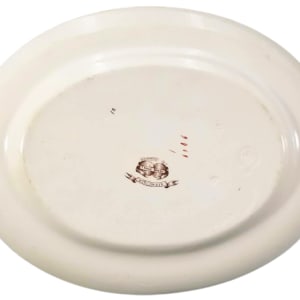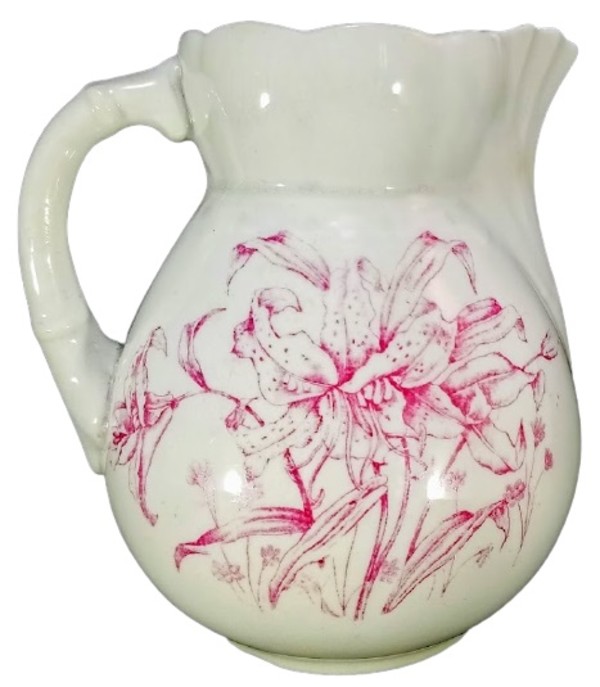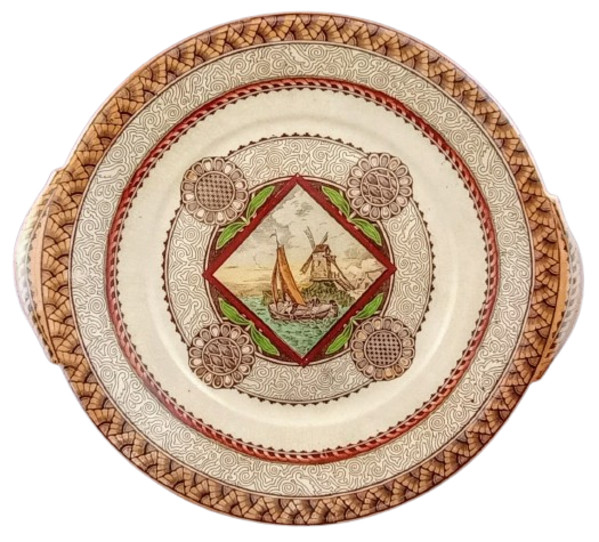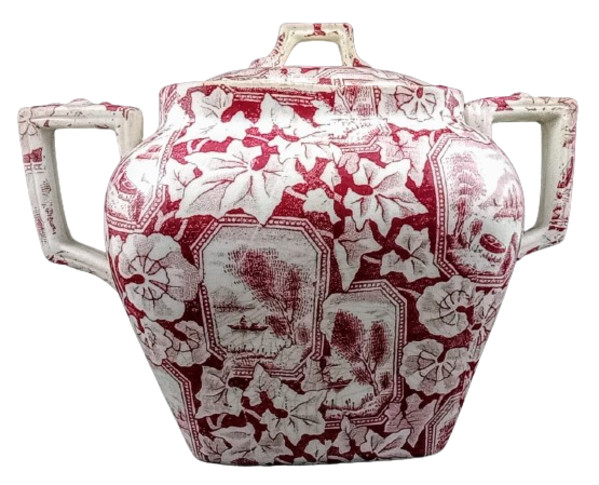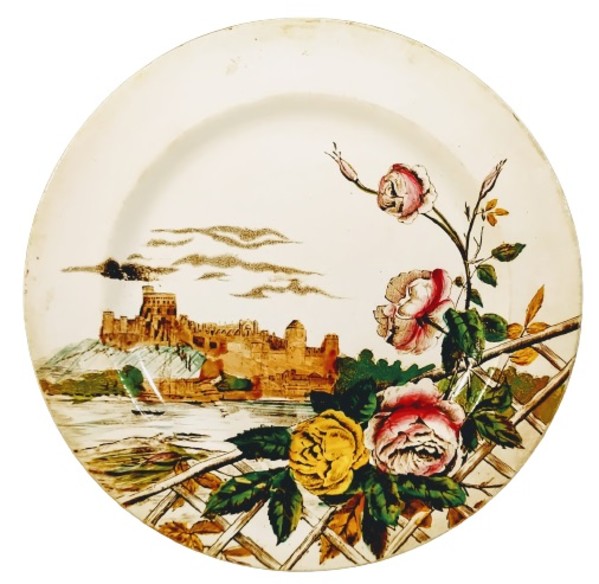- William Brownfield & Son(s)
- Wisconsin, c. 1871-1890
- Earthenware
- 11.5 x 9 in (29.21 x 22.86 cm)
-
Not For Sale
Platter, 11.5 x 9 inches. Brown transfer with polychrome clobbering. Printed and impressed marks are for William Brownfield & Son. "Wisconsin" features a large oval cartouche in the center. The center of the cartouche contains a lakeside scene with a rowboat pulled onto the grassy shore lined with trees. The lakeside scene is framed by a red line and green stylized plants. Around this is a thick border with worm tracks and stylized floral medallions at four equidistant points. The border around the platter consists of three bands. The inner band features repeating half scallops, the middle band features the same worm-track pattern, and the outer border features a repeating triangular geometric motif.
The Brownfields were potters in Cobridge, North Staffordshire from about 1837 to the 1890s. William Brownfield began as a junior partner in the firm of Robinson, Wood & Brownfield, at a pottery formerly owned by Ralph & James Clews. Eventually William Brownfield appears to be the sole owner, the first reference appearing in White’s 1851 directory where we find under china and earthenware manufacturers, Brownfield Wm. Cobridge. The factory produced a range of earthenware, stone china and added stoneware and parian to their productions. In the International Exhibition of 1862 they were awarded a medal for “printed earthenware” but no details are given of the patterns. Entries at other International exhibitions followed. In 1871 William Etches Brownfield entered the business and it became William Brownfield & Son. William Sr. died in 1873 and William Jr. continued and his brother Edward Arthur Brownfield joined the firm. They continued to make a wide range of ceramics with occasional tour de force pieces for national and international exhibition, becoming one of the top ten Staffordshire factories. The company’s last swansong was an unusual venture fostered by Arthur Edward Brownfield, who in 1892 who created a Potter’s Guild based on John Ruskin’s principles. But this “cooperative” was unfortunately destined to failure and the company was wound up in 1900.
- Subject Matter: Aesthetic (Cartouche)
- Collections: Aesthetic Transferware, William Brownfield & Son(s)

